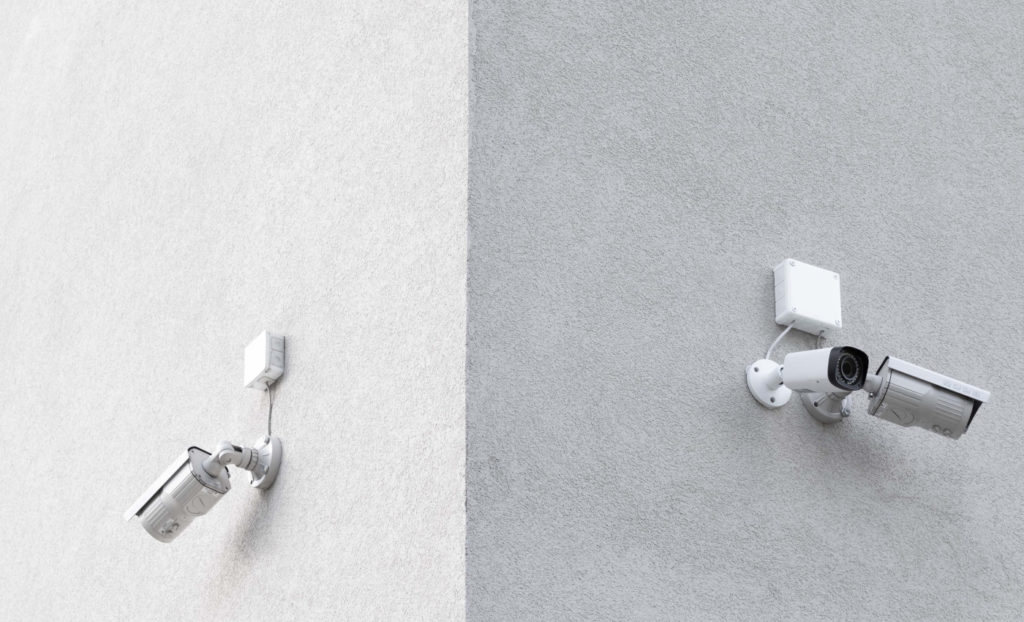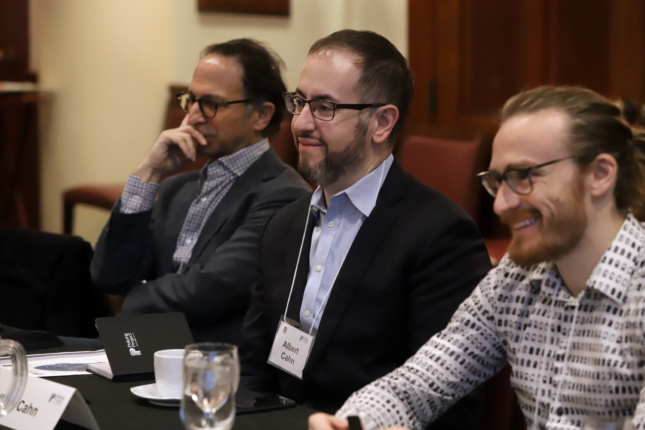Without a suspicious eye or an advanced degree in software engineering, it can be nearly impossible to keep abreast of the evolving role surveillance technology has had in the law enforcement of the built environment. Biometric databanks, facial recognition cameras, cell phone trackers, and other watchful devices have been quietly installed throughout our major cities with shockingly little public disclosure and virtually no discussion with privacy advocates.
New Yorkers deeply familiar with their city’s streets, bridges, and subway system may still be largely unaware of the more than 9,000 surveillance cameras currently installed on top of them under the watchful eye of the New York Police Department (NYPD)—and those are only the ones either publicly disclosed or visible enough for the public to spot on their commutes. Their targets, their prejudices, and the malpractices they engender all remain shrouded in secrecy, resulting in discriminatory injustices too numerous for any member of the common public to challenge.
With prior experience as a lawyer, technologist, and interfaith activist, Albert Cahn founded The Surveillance Technology Oversight Project (S.T.O.P.), a 501(C)(3), non-profit advocacy organization and legal services provider based in New York City in 2019 with the goal of addressing local officials’ growing use of surveillance technologies and serving the victims of surveillance abuse. Within the last year, S.T.O.P. has already stepped in to litigate against many recently uncovered abuses of surveillance technology and databanks; including the NYPD’s misuse of mobile device forensic tools (MDFTs) and the Metropolitan Transportation Authority’s (MTA)’s use of facial recognition surveillance technology in the Times Square/Port Authority Subway Station.
AN, publisher of Tech+, spoke with Cahn to learn about the extent to which surveillance devices have already become a common element of the urban fabric, and what organizations like S.T.O.P. can do to lessen their grasp on our personal information.
Shane Reiner-Roth: How did your nonprofit begin? Why was surveillance chosen as a central issue?
It came out of my prior work as a legal director for The New York Chapter of the Council on American-Islamic Relations (CAIR), a nonprofit organization that has worked for more than 25 years to defend constitutional rights.
In that role, I saw the alarming array of high-tech tools deployed by the NYPD that were disproportionately targeting that demographic. It seemed like there was an urgent need to make that our top priority.
How do you determine an “impacted community?”
Here in New York, the discriminatory habits embedded in surveillance systems mirror those found in more traditional forms of law enforcement. In other words, our group has observed the same patterns of policing that occur in physical spaces using analog techniques being replicated by digital techniques, including identity tracking systems and comprehensive databanks. The Gang Database, for instance, is a confidential record organized by the NYPD that lists over 42,000 New Yorkers as suspected gang members, about 99 [percent] of which are people of color. Oftentimes, the impact of these newly developed systems can engender forms of harassment just as significant as through conducted through stop-and-frisk. The people who are being constantly monitored may not know their lives are under a microscope.
We’ve seen technology originally developed for the US military, including StingRay phone tracking towers and Counter-IED (Improvised Explosive Devices) equipment, deployed throughout the city without public disclosure. The public was not only uninformed of their presence, but they also didn’t learn the extent to which these technologies were potentially retaining their data, and they certainly didn’t have a say in how they were dispersed across the city.
How do surveillance systems present (or conceal) themselves within NYC’s infrastructure?
One of the most difficult parts of surveillance work is that much of the infrastructure is completely opaque to the New Yorkers being monitored. And even if they’re visible to the naked eye, we can’t know by looking at them if they’re running facial recognition, biometric analyses, or any other invasive methods of surveillance.
New York City has the largest investment in anti-terrorism surveillance technology in the country, yet nearly all of it goes unreported. Yet following the initial investment in the physical infrastructure of the city, there’s a relatively low cost to add additional layers of Artificial Intelligence (AI) and surveillance technology on top of it. A common example is the ALPR, a device embedded into many of the city’s bridges to reads license plate numbers and store them in a database that allows the MTA to charge drivers for crossing.
We see cities all around the world grappling with this issue. The issue in China has become well known, in which its citizens can be automatically penalized for behavior its government doesn’t find agreeable in the form of automatic reductions through their WeChat accounts. Suddenly, the wheels of a justice system are not only driven forward by AI, but they make it almost impossible to disagree or contend with what the algorithms decide.
On the flip side, you have countries like Sweden that intentionally limit the data stored in their license plate reading systems. Their authorities have made it clear that they did not install their system for privacy breeching, even though they could use it to make personal information available to the police, they self-imposed limits as a matter of law through automatic image cropping.
Do you feel there could be a version of surveillance that is morally just?
Like any form of law enforcement, advanced forensic systems can, of course, have potentially equitable outcomes—we have seen extreme cases such as with DNA matching to exonerate innocent people, for instance. The problem comes in when it’s embedded in our infrastructure without the proper safeguards—when they collect data that is simply inappropriate to collect in a free society.
How can ordinary citizens protect themselves against unwarranted surveillance when navigating the city?
It’s often the case that the people who have the time and money to invest in protecting themselves against surveillance are those who are also least vulnerable to its effects. The clients of mine who may be struggling financially or are undocumented are usually not able to invest the same level of resources.
While individuals can always increase their odds of maintaining privacy by improving the security of their digital identities, none of us will be able to protect our privacy until we reform the laws and enforce better police practices. We need systemic reform to be truly secure in our privacy and reverse racial injustices perpetuated by unregulated surveillance infrastructure.
Do you hope to broaden your work beyond New York state?
There are already so many amazing activists operating throughout the world fighting the same battles we do in New York City. While S.T.O.P. will always be based here, we have offered advice on potential litigations strategies beyond our city and will continue this service in the future.
For more on the latest in AEC technology and for information about the upcoming TECH+ conference, visit https://techplusexpo.com/events/la/

